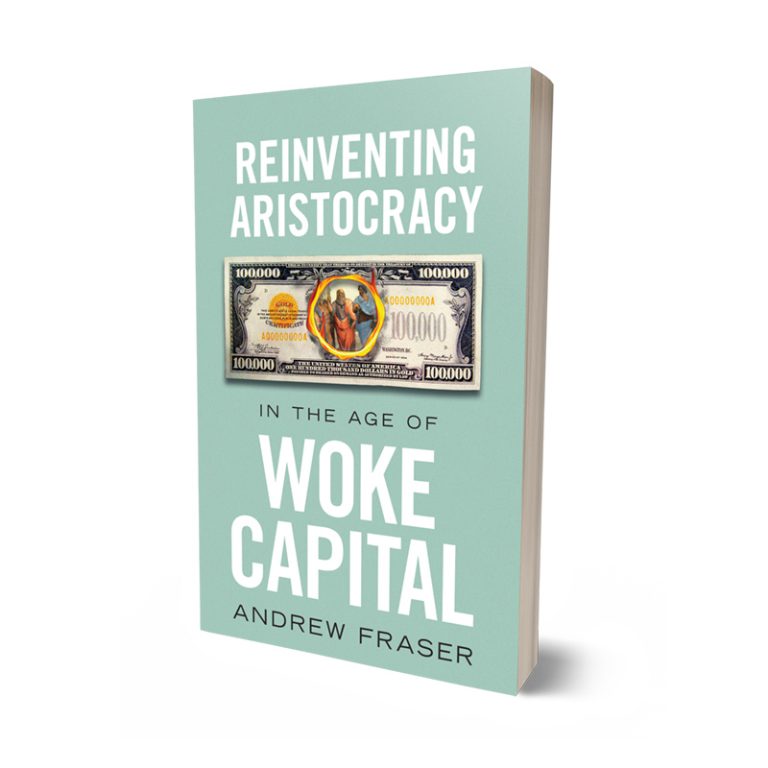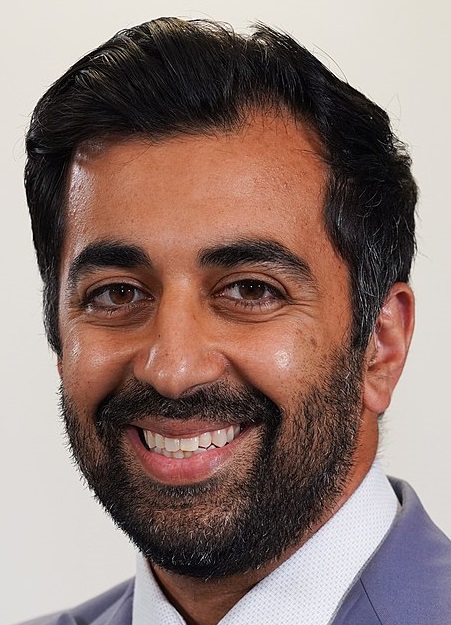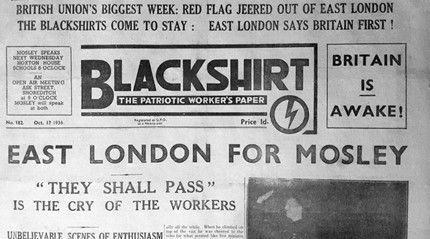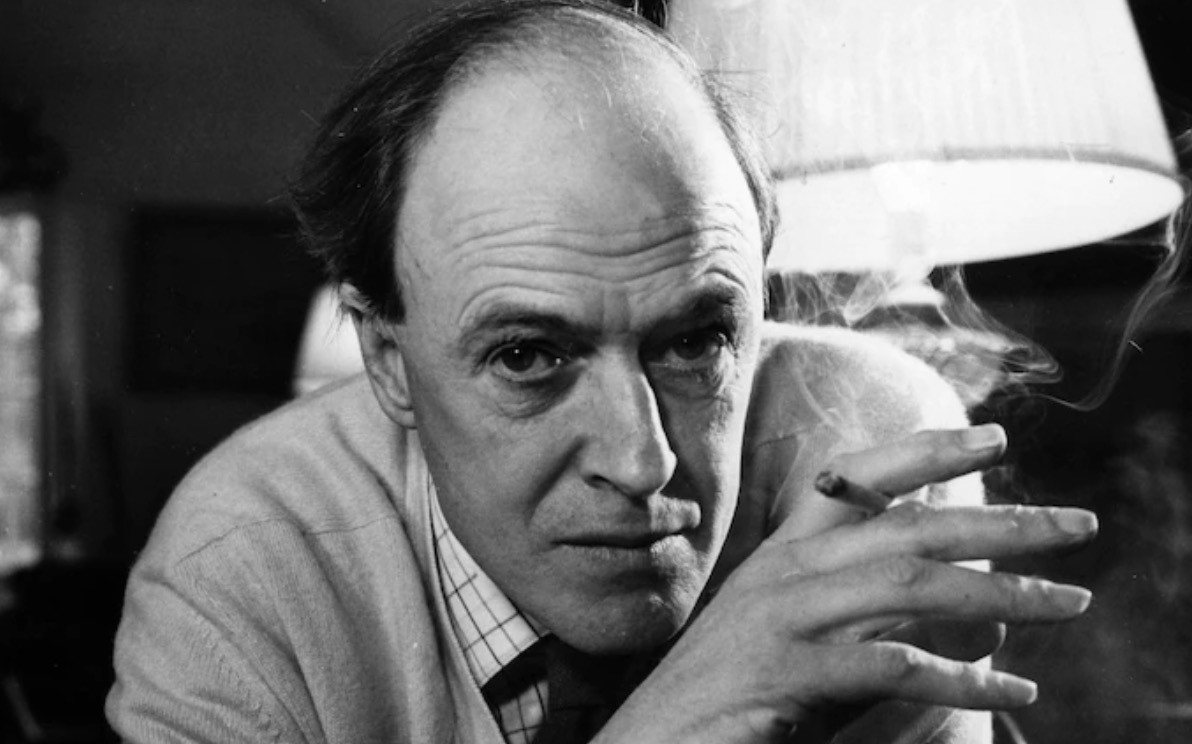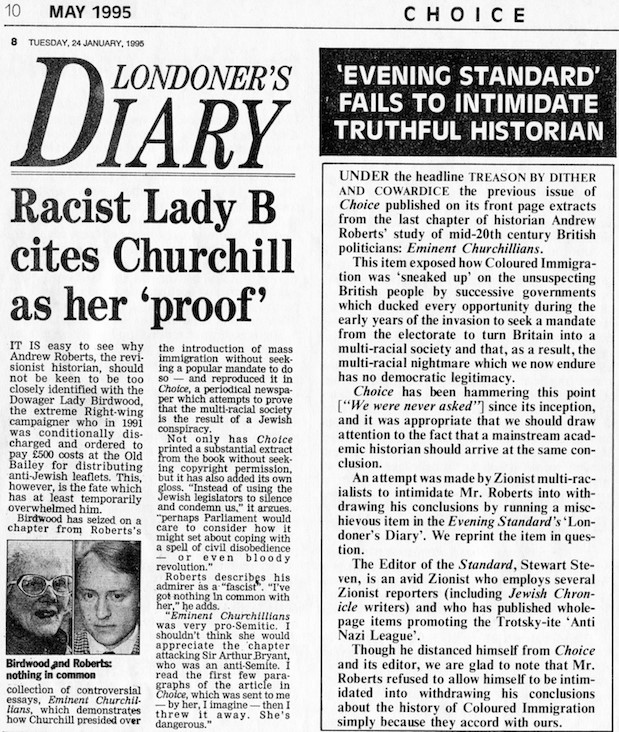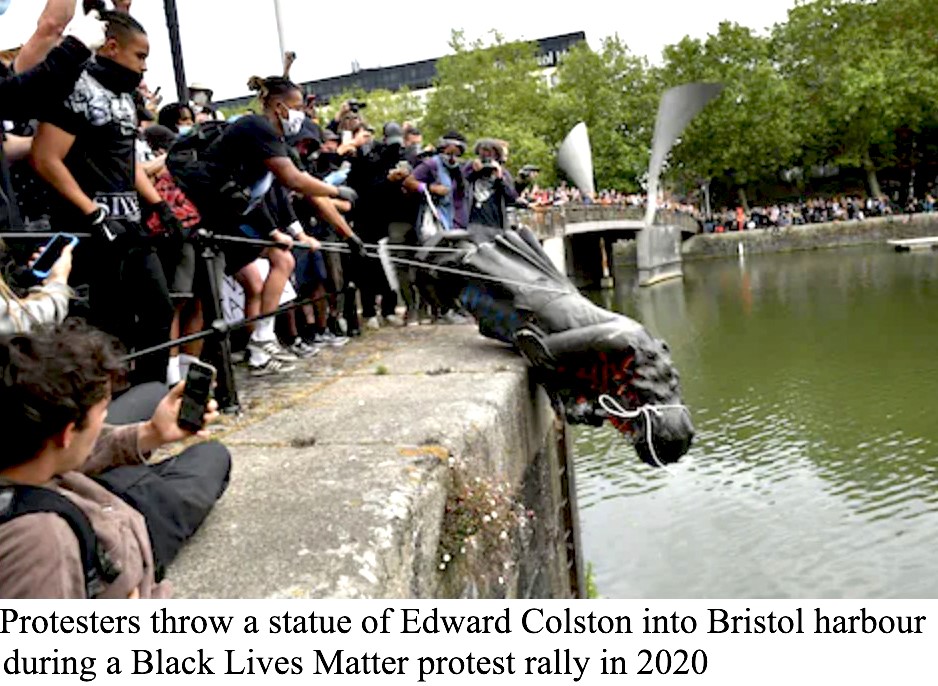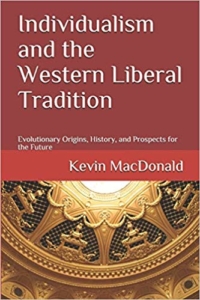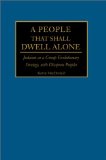Many Jews are in positions of overt power and influence, such as those placed throughout the current Biden Administration, or those on the Board of Trustees of the globalist hub World Economic Forum. They have names with which we are familiar, such as Larry Fink, Anthony Blinken, Rachel/Richard Levine, Merrick Garland, Janet Yellen, Alejandro Mayorkas, Jeff Zients (Chief of Staff for the mentally disabled Biden; he recently replaced Ron Klain), David Rubenstein, Mark Benioff and many others.
Other Jews however are not as prominent, and we are not likely to know their names. Their power and influence may nevertheless be considerable, and so a careful study of their identities and activities may serve to inform our self-defense. These Jews may not be considered Crypto-Jews in the classic sense, since they are not intentionally hiding their Jewish identity, nor particularly self-suppressing their presence as Jews in our society. In a lesser way their lack of prominence can act as a cover for their harmful influence among unsuspecting people. Exposing them can only help our cause.
Early Influences and Training for an Anti-White “Hate” Expert
One such Jew who has and is wielding considerable influence in key areas is Kenneth Stern. He is the current Director of the Bard Center for the Study of Hate, part of the Human Rights Project at Bard College in New York, from which Stern graduated in 1975. Let us examine the extraordinary career trajectory of this Jewish “expert” on hate, extremism, intolerance, anti-Semitism, holocaust denial—with never a focus upon abuses of Jewish power.
Stern graduated with a law degree from the Willamette University College of Law in Oregon in 1979 and immediately became managing director of his law firm, Rose and Stern until 1985. His most notable case during this time was as trial and appellate counsel for Dennis Banks, co-founder of the American Indian Movement. We may suppose Jews supported the American Indian Movement for the same reasons they organized and funded the NAACP, or today’s Black Lives Matter: using racial minorities as cannon fodder against White Christian society. Genuine concern for the struggles of American Indians would be far from Stern’s mind. Other notable cases included defending Portland Oregon’s homeless population against an anti-camping ordinance, and representing plaintiffs Jack and Micky Scott in a $7 million defamation suit against heiress to the William Randolph Hearst media fortune Patricia Hearst. Stern had high-profile cases at the beginning of his career.
Stern was Director of the National Organization Against Terrorism in Brooklyn during 1985–1986. During the period from 1979–1988, during which Stern was Director, all recording of terrorist attacks on Americans stated the perpetrators were “militant Islamic extremists.” This included Israel’s enemies Muammar Qaddafi of Libya, the Lebanese Hezbollah, and Iran. According to the timeline, the Israeli Mossad, Shin Bet and IDF committed no acts of terrorism during this period.
For the next two years Stern was the environmental enforcement counsel of New York City’s Department of Sanitation. Private commercial waste removal in New York City has long been a notorious operation of the Mafia or “Cosa Nostra,” increasingly including the Jewish Mafia. An extensive report addressing such organized crime by the New York State Environmental Conservation Committee was published in 1987, during Stern’s time as counsel to the City’s Sanitation Department.
Stern was a member of the International Association of Jewish Lawyers and Jurists from 1983 to 1988. He married Marjory Slome, a Rabbi, in 1989. Thereafter, Stern’s career as an expert on anti-Semitism, hate and holocaust denial blossomed.
“Hate” and “Anti-Semitism” Expert
From 1989 to 2014 Stern was a specialist on anti-Semitism & extremism of the American Jewish Committee in New York City. He was expert on anti-Semitism, extremism, and hate groups, and was a spokesperson.
The “About Us” section of the New York Chapter of the AJC states:
In advancing the goals of the American Jewish Committee in New York City, the New York Chapter works to support the State of Israel; combat anti-Semitism; and build bridges both within the New York Jewish community and with outside partners, including diplomats, government officials, and leaders of other ethnic and religious communities. Our objective is to promote mutual respect and understanding, as well as advocate for communal and public policies that safeguard the Jewish people and advance the causes of civil rights and social justice.
During this 25-year period of Stern’s advocacy, he testified to Congress, appeared at the White House Conference on Hate Crimes in 1997 during the philo-Semitic Presidency of Bill Clinton, and studied and reported on the “militia movement,” “bigotry” on campus, “hate speech” on radio and internet, and was instrumental in making such concepts familiarized in society.
At the Conference on Hate Crimes, Clinton said “As part of our preparation for the new century, it is time for us to mount an all-out assault on hate crimes, to punish them swiftly and severely.” The Conference attempted to define “hate crime”: “A hate crime is the embodiment of intolerance — an act of violence against a person or property based on the victim’s race, color, gender, national origin, religion, sexual orientation or disability.” While no specific mention is made of Jews, nevertheless “Participants attended a closing reception at the United States Holocaust Museum.”
Stern appeared on Face the Nation, Crossfire, Nightline, Dateline, Good Morning America, CBS Evening News, and National Public Radio, among others. (We must not confuse him with the Ken Stern who worked at National Public Radio from 1999–2008, becoming CEO until ousted in 2008; he appears to be German.) I could find no transcripts or video archives of Stern’s statements on these major media outlets, but we can know his views from other sources.
Author of the “Working Definition of Anti-Semitism”
In 2004 Kenneth Stern was the “lead drafter” of the “working definition of anti-semitism,” according to Stern’s own essay in the Guardian of December 2019. Analysis by Peter Ullrich’s “Expert Opinion On The ‘Working Definition Of Antisemitism’ Of The International Holocaust Remembrance Alliance “reveals severe deficits.” It is “inconsistent, contradictory and formulated very vaguely. It therefore does not satisfy the requirements of a good definition.” Stern’s definition states:
Antisemitism is a certain perception of Jews, which may be expressed as hatred toward Jews. Rhetorical and physical manifestations of antisemitism are directed toward Jewish or non-Jewish individuals and/or their property, toward Jewish community institutions and religious facilities.
So, “hatred toward Jews” is anti-Semitism. Or “non-Jewish individuals” too. Vague indeed. An anti-Semite used to mean someone who hated Jews, but Stern has helped make it mean someone whom Jews hate. The greatest criticism of the definition is of the eleven examples that accompany it. Seven of the eleven examples relate to the nation of Israel, criticism of which on a number of key points is to be considered “anti-semitism.” Let us consider all eleven examples:
- Calling for, aiding, or justifying the killing or harming of Jews in the name of a radical ideology or an extremist view of religion.
- Making mendacious, dehumanizing, demonizing, or stereotypical allegations about Jews as such or the power of Jews as collective — such as, especially but not exclusively, the myth about a world Jewish conspiracy or of Jews controlling the media, economy, government or other societal institutions.
- Accusing Jews as a people of being responsible for real or imagined wrongdoing committed by a single Jewish person or group, or even for acts committed by non-Jews.
- Denying the fact, scope, mechanisms (e.g. gas chambers) or intentionality of the genocide of the Jewish people at the hands of National Socialist Germany and its supporters and accomplices during World War II (the Holocaust).
- Accusing the Jews as a people, or Israel as a state, of inventing or exaggerating the Holocaust.
- Accusing Jewish citizens of being more loyal to Israel, or to the alleged priorities of Jews worldwide, than to the interests of their own nations.
- Denying the Jewish people their right to self-determination, e.g., by claiming that the existence of a State of Israel is a racist endeavor.
- Applying double standards by requiring of it a behavior not expected or demanded of any other democratic nation.
- Using the symbols and images associated with classic antisemitism (e.g., claims of Jews killing Jesus or blood libel) to characterize Israel or Israelis.
- Drawing comparisons of contemporary Israeli policy to that of the Nazis.
- Holding Jews collectively responsible for actions of the state of Israel.
Ample criticism and denunciation of these examples makes it unnecessary for us to denounce them here, except to say Kenneth Stern was central to their formulation and application. Obviously they confer special protective status to certain Jews and all Jews generally, and to the nation of Israel, exonerating it from its ongoing heinous crimes against humanity. The British Labour Party’s refusal to accept the full definition and examples created an immense scandal, and eventually the Labour Party collapsed under its own Semitophobia and adopted the definition. If there was one man responsible for the great furor and fuss that erupted when the new definition was introduced in 2005, it was Kenneth Stern.
Holocaust Promotion, Holocaust Protection
As is evident, two of the examples address that epitome of Jewish suffering and specialness, the holocaust. They amount to “holocaust denial” and accusing Jews of lying about it. Stern acted in vigorous defense of the holocaust when he wrote in the preface to his 1993 book Holocaust Denial (“one of the first to target holocaust denial”):
The history of anti-semitism emblazons one truth above all others: lies that promote Jew-hatred must never be ignored. Holocaust denial, though ridiculed today [1993!], has the attributes to become a potent form of anti-semitism. (p. xi)
It also had the attributes to be a potent form of truth, but Stern has worked to distort and subvert that truth over the decades since Holocaust Denial was published. To Stern, truth is dangerous to Jews, and he is a staunch defender of Jewry. “Holocaust denial is not about historical truth. It is about anti-Jewish hatred as part of a political agenda—and must be confronted as such.” (p. xii) Strategically it is advantageous for Stern and holocaust promoters to steer the debate away from historical truth. Here we may not plunge once again into debate over the veracity of the holocaust story, so to conclude this aspect of Stern’s influence, we will consider why holocaust promoters such as Stern avoid debate:
First, Jews, historians and others of goodwill have to make clear why we will not debate deniers [hint: it is not because they will lose]. Second, we have to expose the disingenuousness of the deniers’ insistence on debate. Professional deniers are not holocaust scholars, but anti-semitic imposters with a neo-Nazi political agenda… (p. 59)
Essentially, don’t engage in scholarly debate, but dismiss with ad hominem attacks. Of note, Stern’s book release was timed to the opening of the Holocaust Memorial in Washington D.C. Stern says his book is intended to “increase awareness of the Memorial’s lesson: that genocide is always possible if people are complacent about hatred.” (p. xii) At the time Stern was Program Specialist on Anti-Semitism and Extremism at the American Jewish Committee.
International Influence
By 2000 Stern entered into wider prominence internationally through his role as special advisor to the defense in the David Irving v. Penguin Books and Deborah Lipstadt trial. This was the most high profile holocaust case since the Ernst Zundel trial in Canada in 1988, and would supposedly determine not just the truth or falsehood of the holocaust story. And it would also be a landmark case about whether it could even be debated into the future. Irving chose to represent himself without professional counsel, and to his great misfortune (literally bankrupted by the $2 million award against him), and the misfortune of all revisionist historians thereafter, he lost.
Deborah Lipstadt, defendant, went on to become today’s Special Envoy to Monitor and Combat Antisemitism at the U.S. Department of State. Irving continues to publish his magnificent works of history, particularly regarding the Third Reich and National Socialist leaders, but struggles with poverty and marginalization, his speaking events held in virtual secrecy before small committed audiences to avoid violent protests, and infiltrated by monitors to ensure Irving’s self-censorship. Kenneth Stern’s “special advice” to the defendants helped ensure this sad and tragic verdict.
In 2001 Stern was appointed to the United States delegation to the Stockholm International Forum on Combating Intolerance. These forums began in 2000 and went through 2004. The first forum was titled “Education, Remembrance and Research on the Holocaust.” One compelling reason to hold the forums was a Swedish study which showed “that knowledge among young people of the Holocaust was deficient and that a large number of teenagers were not even certain that it had taken place.” The first forum established the general predominance of Jews as the primary victims of “intolerance,” a theme that was realized in a book summarizing all four forums, titled Beyond the ‘Never Agains’. The 2001 forum which Stern attended was titled “Combating Intolerance” and focused on contemporary issues, especially “anti-semitism” in the modern world. This forum .”..aimed to increase collaboration between individuals and organisations at all levels of interaction — local and national, as well as regional and international.” Stern’s influence thus went international.
The 2001 forum, which occurred in late January, many months before 9-11, issued a Declaration with 10 points of commitment. All are worth considering in the context of today’s anti-White, “woke,” multi-racial world, but number 10 will suffice:
As we begin the new Millennium, we offer our support to those affected by and vulnerable to all forms of intolerance. The memory of those killed by violent racism, antisemitism, islamophobia, xenophobia, homophobia and other forms of intolerance will remain vivid in our minds as we make a world where intolerance has no place, where all human beings are respected and equal in dignity, and where all societies are inclusive. In the name of justice, humanity and respect for human dignity we pledge to continue combating all forms of intolerance and to do all we can to bring about a world of inclusive societies speedily in our day.
Whatever contribution Stern had to this commitment statement, it is consistent with Jewish ingroup strategies to create multi-racial societies where Jews can more freely extend Jewish power at the expense of Whites. One wonders if the 2003 forum was canceled because “Neo-con” Jews and Zionists were preparing to launch the war on Iraq on behalf of Israel though fought primarily by the U.S. military. Jewish intolerance of Arab Iraqis killed by violent Zionist racism would violate their commitment to the forum’s #10 statement. “All human beings are respected and equal in dignity,” would still apply to Iraqis lying in pools of blood shredded by U.S. drone strikes instigated by Zionist Jewish “Neo-cons.” So would IDF strikes on helpless Palestinians in their open air prison of Gaza. Thus perhaps it was inauspicious to hold a forum in 2003.
Publications on “Hate” and “Antisemitism” by the “Expert”
By 2006 Stern published Antisemitism Today: How It Is the Same, How It Is Different and How to Fight It. He concludes his Foreward:
This book is an effort, not necessarily to provide the right answers, but more urgently to help ensure that those who care about combating antisemitism are asking intelligent and relevant questions, and not defaulting into comfortable but too often unproved and perhaps ineffective answers. (p. viii)
This book will inevitably provide the wrong answers by asking foolish and irrelevant questions about the supposed psychopathology and reactionaryism of non-Jews, instead of providing proven and effective answers about the predatory, corrupting, impoverishing and damaging behavior of Jews in non-Jewish societies. Never will Stern consider that the primary reason for anti-Semitism is Jewish behavior itself. All efforts to “combat” antisemitism must depict Jews as innocent victims, and non-Jews as maniacal irrational haters. This—taking a combative approach to reducing antisemitism—of course only increases it. Given the history of Jewish anti-semitism, it would not be a surprise if that is Stern’s actual goal.
Stern wrote earlier books Loud Hawk: The United States vs. the American Indian Movement (1994) and A Force Upon the Plain: The American Militia Movement and the Politics of Hate (1996). Stern admits that what is good for pro-Indian causes is good for Jewish causes too:
Antisemitism thrives best in climates that tolerate other prejudices as well. I try to do all I can through my work to educate people about anti-Indian prejudice. I am proud that the American Jewish Committee is increasingly reaching out to Indian country, to support Indian religious freedoms and to combat anti-Indian bigotry. Dennis (Banks) once commented to me that all his lawyers over the years were Jewish. Neither of us thought that was a coincidence. (Epilogue, p. 353)
Neither do any of us. As far back as 1994 Jews were using other racial groups in America in their war on Whites, especially White Christians. So highly motivated, “Stern, a law student at the time, volunteered his services to the defense attorneys and remained with the case until its resolution,” though “The case did not end until 1988, after thirteen years of pretrial litigaion (sic). It stands as the longest pretrial case in U.S. history.”
Also in his book’s Epilogue, Stern presents the list of weapons and bombs the American Indian Movement wrote down in a notebook, one of the government’s exhibits against them. Stern also tells of a map he found in an AIM trailer after the sentencing, which showed 17 U.S. cities covering a span of one year from 1975–76. These were cities visited by the Bicentennial Freedom Train exhibit. Stern says “Nineteenth-century trains had brought subjugation to Indian people.” (p. 351) He fails to note that Jewish bankers such as the Rothschilds and others profited immensely from such rail infrastructure they financed. This evidence of weapons and bombs plus a list of target cities has striking similarities to the charges against the African National Congress and Nelson Mandela at the Rivonia Trial. The ANC and Mandela were also advised and funded by Jews. (The print version, Ostara Publications, updated 2018, contains an Appendix 2, “Mandela’s Jews: Jewish Involvement in the Rivonia Plot,” pp. 170–73)
In A Force Upon the Plain: The American Militia Movement and the Politics of Hate, Stern admits in regard to the bombing of the Alfred P. Murrah Federal Building in Oklahoma City on April 19, 1995:
Nine days before the blast I had issued a lengthy report on the militia movement for the American Jewish Committee. … In early April I had written that people connected with militias were poised to attack government officials, possibly on April 19, 1995, the second anniversary of the fiery end of the Branch Davidian compound in Waco. (p. 11)
This is an astoundingly accurate prediction, to the exact day, even for such a long-time “expert” on hate as Kenneth Stern. Jews have displayed advance knowledge of false flag attacks at other times, such as the “Five Dancing Israelis” before 9-11, who were sent by the Israeli Mossad to “document the event.” Stern does not redirect the blame to “Islamic terrorists” but to White American militias. Does Stern also condemn the similar bombing of the King David Hotel in Jerusalem when 91 people, Arab and British administrators and hotel staff including 17 Israeli Jews were killed by other Israeli Irgun Jews disguised as Arabs?
A damning review of A Force upon the Plain by David B. Kopel (no militia supporter, having been a monthly donor to the Southern Poverty Law Center for 10 years) denounces Stern’s book for lacking any footnotes, describes the link between militias and the Oklahoma City bombing as “tenuous,” and notes that “the Southern Poverty Law Center’s data show that militia members perpetrate violent crimes at a per capita rate far below that of the U.S. population as a whole.” Essentially reversing Stern’s criticism of a documentary about Waco, Kopel describes Stern’s book as “a model of conspiratorial ‘logic’ designed to grab audiences who, if they accepted the premises and did not question the sleight-of-hand, easily could [be] convinced.” Those educated on the Jewish Issue are much harder to convince.
Stern’s latest book is The Conflict Over The Conflict: The Israel/Palestine Campus Debate (2020). Stern was undoubtedly aware of the rising anti-Israel, pro-Palestinian boycott/divestment/sanction movement on campuses led by Students for Justice in Palestine. His book advocates for open debate on the issue:
But (a college) must not shield its students from examining ideas, even clearly hateful ones. After all, if thousands or millions of people believe certain ideas, how do we learn how to combat them if we don’t study them?
Stern’s strategy here is to expose the pro-Palestine side of the debate as “hateful,” and “combat” their views in the open arena of ideas on campus. To provide perspective, Stern says:
I also recommended full-semester interdisciplinary courses on antisemitism. From my experience teaching such a course, even students who have markedly different views on Israel/Palestine, by the time we reach the sections on Israel and Zionism, have a framework for discussing their different perspectives reasonably.
This “framework” is of course sympathy for innocent, suffering, victimized Jews, making students subject to this indoctrination less able to take the Palestinian side. Stern recommends no counter-balancing “full-semester interdisciplinary courses” on anti-Arabism. But doesn’t anti-Semitism also include anti-Arabism, since Arabs are Semites too? Not to Stern. Anti-Semitism means only one thing, and that is hate of Jews just for being Jewish.
Hate for Haters: Recent and Current Endeavors
From 2014 through 2018, Stern was executive director of the Justus & Karin Rosenberg Foundation.
The Justus and Karin Rosenberg Foundation supports – through gifts and direct engagement of the Rosenberg Foundation staff – efforts to combat antisemitism and anti-Israel activity on campus, antisemitic hate crimes, Holocaust denial, antisemitic discourse, state-sponsored antisemitism, and other issues that have a direct impact on the growth of antisemitism.
Under Program Areas, Stern was working hard to indoctrinate college students with his hate obsession. They seem opposed to standard capitalization:
The Foundation provided support to four bard college [sic. students?] through this program in 2018, and the program’s executive director had significant involvement… in this program by (i) helping students identify and secure placements at appropriate ngos, (ii) meeting and regularly corresponding, via email and phone, with the students individually to share his knowledge of relevant issues and to provide contacts in the field in order to prepare each student for his or her internship; (iii) organizing and leading a two-day text study with the interns about hate…
Stern was working hard in other related areas to spread his message of hate, antisemitism and extremism.
The foundation’s executive director provided assistance to other organizations and individuals on issues relating to the Foundation’s mission, including: (I) the committee on the judiciary of the united states house of representatives (tesimony) [sic]; (ii) faculty, administrators and students regarding constructive ways to respond to hatred and antisemitism on various campuses; (iii) leaders of the Foundation for individual rights in education, j street, j street u, academic engagement network, the american association of jewish lawyers and jurists, open hillel, secure community network, and ameinu; (iv) the staff of the u.s. Holocaust memorial museum’s committee on holocaust denial and state-sponsored antisemitism (the executive director serves on this committee); (v) the institue [sic] for hate studies at gonzaga university regarding future programs (the executive director services [sic] on the advisory aboard for the institue) [sic]; (vi) the executive committee of the alliance for academic freedom…
Stern was very active with influences far beyond college campuses, reaching throughout mainstream society:
The Foundation’s executive director helped to educate the public on the Foundation’s mission by participating in educational conferences and writing opinion pieces in national publications; specifically the executive director wrote or co-authored opinion pieces that appeared in the forward (about antisemitism and about white supremacy and about academic freedom), cnn online (about a proposed neo-nazi march), inside higher education (about academic freedom and antisemitism), academe blog (about academic freedom and antisemitism), the richmond times (about academic freedom and antisemitism), post & courier (about academic freedom and antisemitism), and ther la (sic?) jewish journal (about white supremacy). The executive director also spoke before the american association of jewish lawyers and jurists, congrtation (sic) kehalath jesurun. The 92nd street y, the academic engagement network, the national jewish student journalism conference, nyu, congregation beth elohim, friends semnary (sic)…
The Justus and Karin Rosenberg Foundation closed in 2018, but in its final year it granted almost a million dollars to Bard College “To Support the Foundation’s Mission of Working To Combat And To Increase the Serious Study of hatred and Antisemitism.” Since Stern is also director of the Bard Center for the Study of Hate, for him as director of the Foundation to donate this money to another organization he directs is a flagrant example of conflict of interest and Jewish nepotism. Stern was paid almost $70,000 in 2018 as director of the Foundation.
As Foundation director in 2017, Stern submitted a 17-page testimony with three appendices to the U. S. House of Representatives Committee on the Judiciary Hearing on Examining Anti-Semitism on College Campuses.
In late 2019, President Trump signed an executive order that “affords protection to Jewish students under title VI of the Civil Rights Act.” In his Guardian essay “I drafted the definition of antisemitism. Rightwing Jews are weaponizing it,” Stern complains that “rightwing” Jews were using the executive order to protect the Jewish state of Israel from criticism and denunciation, especially from Students for Justice in Palestine. And to Stern’s outrage, they were using his definition of antisemitism with its examples regarding Israel as a reference. Stern claims, “This order is an attack on academic freedom and free speech, and will harm not only pro-Palestinian advocates, but also Jewish students and faculty, and the academy itself.”
This is not another expression of Jewish Antisemitism, but a example of Jewish in-fighting, in this case between rightwing and leftwing Jews regarding Israel. Stern is leftwing, and cannot condone rightwing Zionist Jews protecting the rightwing government of Israel in this way. He wants open discussion, not over the right of Israel to exist, but over whether a rightwing or leftwing government will lead it.
Today, as noted, Stern “is director of the Bard Center for the Study of Hate, a program of the Human Rights Project at Bard College.” He is motivated to expand the study of hate world-wide:
Stern is also active in the effort to establish an interdisciplinary academic field of Hate Studies. He previously served on the director’s advisory board for the Gonzaga University Institute for Hate Studies, and he remains on the editorial board of the Journal of Hate Studies.
Conclusion
Jewish Professor, spokesman and advocate Kenneth Stern has worked hard through a long and distinguished career to gain mastery of the complex topics of hate, extremism and antisemitism, and spread his knowledge to large masses of people on campus and throughout and wherever Jews reside. In Stern’s advocacy, the heinous traits he studies exist only in non-Jews, never Jews themselves. Stern maintains the long-standing position that Jews are only innocent victims of hate, extremism and antisemitism, never responsible in any way for the hate that is directed toward them. In other words, to Stern there exists no legitimate anti-Semitism. The remedy to this intolerable situation is never for Jews to change their behavior toward non-Jews, but to “combat” antisemitism and hate with indoctrination, intimidation, lawsuits, imprisonment and fear of Jewish power.
Let us close our examination of Quasi Crytpo-Jew Kenneth Stern with solutions he proposed in his 2007 essay “Holocaust education won’t stop hate,” which too few of us have ever seen:
There are many things that can and are being done to combat today’s hatred of Jews. Human rights organizations must be challenged when they do not sufficiently assert that freedom from anti-Semitism is a human right.
Governments must be engaged to ensure that they investigate and prosecute anti-Semitic hate crimes fully. Monitoring groups must catalog not only the old-fashioned forms of religious and racial anti-Semitism, but also the more contemporary forms which treat the Jewish state in the same bigoted manner that traditional anti-Semitism regards the individual Jew.
A Jew such as Stern is obviously highly intelligent. How is it possible that Stern can never see that among the “many things that can be done to combat today’s hatred of Jews” must include Jews changing their destructive behavior toward non-Jews? Hate is not the problem, Jewish behavior is. Everyone experiences hate, and the biggest problem comes from those who do not embrace their own, but project it onto others. Stern only contributes to hatred of Jews with all his hate-mongering, extremism tracking and hyper vigilance for antisemitism. It is difficult to conceive of a more hateful object than a hysterical Jew who has contributed to the ruin of White Christian Patriotic America with an immense blind spot running around pointing fingers at other haters.
Now we know.

